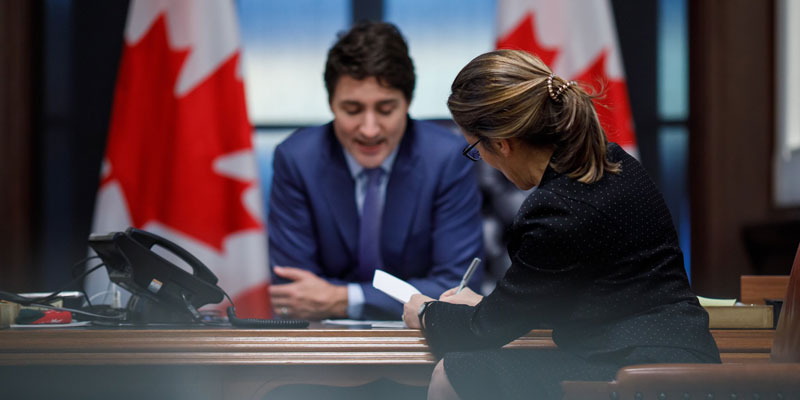Trudeau government spending large on Canada’s credit card

The 2021 federal budget released on Monday solidifies the legacy of the Trudeau government—it pays for spending with the country’s credit card and shows a disregard for the country’s growing debt.
As outlined in Budget 2021, Ottawa expects revenues this year (2021/22) to exceed expectations from the economic update (released in November 2020) by $19.2 billion. In other words, the Trudeau Liberals expect to have almost $20 billion more in revenues this year than originally budgeted.
And yet, the 2021/22 deficit—that is, the amount of spending in excess of revenues—is $33.5 billion larger than estimated just five months ago (November 2020). The explanation is telling. Interest costs on the debt are $1.8 billion higher but the expected additional costs for public-sector pensions are $3.4 billion lower. But program spending in 2021/22 is $54.4 billion higher than planned in November 2020, thus the larger deficit.
Put differently, if the Trudeau government had simply maintained spending levels (established in November 2020) for 2021/22, the deficit would have been reduced by almost $20 billion instead of increasing by more than $33 billion. This reflects the proclivity of the Trudeau government to spend regardless of the effects on the deficit and debt.
And this is not the first time the Trudeau government has opted to spend extra revenues. In the fall of 2018, for instance, $5.5 billion in higher-than-expected revenues and $2.5 billion in lower-than-budgeted debt interest costs generated an unexpected budget windfall of $8.0 billion. But rather than simply stick to the spending planned in the spring budget, the government hastily increased outlays by $8.0 billion, spending all the found money.
This zeal for spending by explains how per-person federal spending (adjusted for inflation) reached an historic high in 2019 only to be surpassed in 2020, even before COVID-related spending. In fact, per-person spending in 2020 (excluding COVID-related spending) reached $11,165 (another $5,956 was spent on COVID-related programs). The $11,165, however, was the highest level of per-person spending in Canadian history, well above the $9,153 recorded during the 2009 recession or the $7,908 spent during the peak of the Second World War.
The disregard for the effects of borrowing and accumulation of debt is why Canada has the fastest-growing debt in the G-7. It also explains the huge increases in national debt since the Trudeau government took power. Net debt (total liabilities minus financial assets) stood at $695.7 billion in 2015-16. By 2019-20, before the full effect of COVID and the recession, net debt reached $812.9 billion, an increase of 16.8 per cent in just four years. It’s now expected to reach $1.5 trillion by 2025/26.
The cost to Canadians for the Trudeau government’s profligate spending, both before and after COVID, has not only increased the country’s national debt but placed federal finances in a precarious position. The government already expects interest costs on the national debt to increase by a cumulative $20.0 billion over the next five years compared to original estimates provided last fall. And this still assumes relatively low interest rates. An increase in interest rates or the risk premium attached to Canadian debt would result in a marked increase in interest costs and further deterioration of federal finances.


